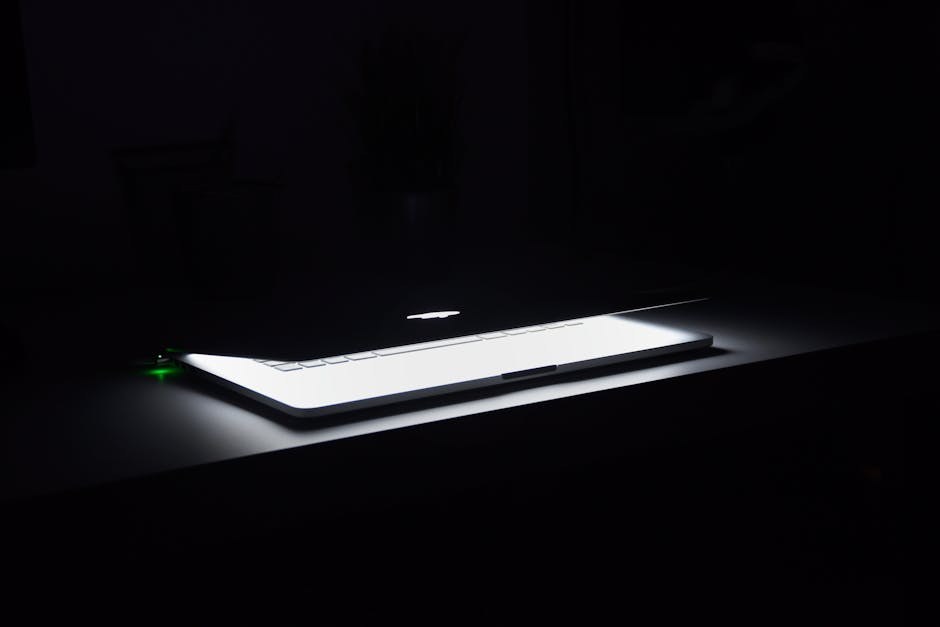Digital intimacy can feel spontaneous and thrilling – a private show, a flirtatious video chat, a selfie shared in confidence – but the moment a lens is involved, you’re also stepping into a space where data lingers and devices behave in ways that aren’t always obvious. Treating webcam privacy as an afterthought is a fast track to regret. Before you undress for your partner on camera or stage a sultry live session, it’s worth slowing down and thinking through how images travel, how people react when feelings change, and how the gadgets in your home listen and look. This guide reframes familiar warnings into practical, plain-English considerations so you can make choices that feel genuinely informed rather than rushed by pressure or curiosity.
Why the “private” in private video is never guaranteed
Many people assume that if they click “delete,” the image or clip vanishes. In reality, files are resilient – they’re copied, cached, backed up, and mirrored across devices. That’s why webcam privacy begins long before a call connects. Once a photo leaves your phone or a stream leaves your laptop, it can be saved by someone else or captured in the background by software. Even if you tidy up your own folders, there may be versions you never see again yet still exist on a friend’s device, in a cloud recycle bin, or in a hidden album. Think of digital intimacy as writing on layered paper – you can erase your top layer, but impressions remain pressed into sheets beneath.
Because the Internet rewards sharing, anything novel or scandalous tends to propagate. A single screen grab can be messaged, re-messaged, and posted in places you never visit. Anyone who has been online long enough knows that content often outlives the context that made it feel safe. That’s why advocates of webcam privacy encourage you to treat any image you create as potentially persistent, even when the app promises ephemerality. Ephemeral interfaces are convenient, but persistence is the rule.

Consent is not a one-time event
When you’re in love – or even just infatuated – it’s tempting to equate affection with unconditional trust. But emotions evolve, arguments happen, and breakups can flip someone’s priorities. In calmer moments, people usually agree that humiliating an ex is cruel. In heated moments, some forget. Protecting webcam privacy means planning for both the best and worst versions of human behavior. If a partner insists that you “prove” your affection by sending explicit shots, that’s not romance; that’s leverage. Pressure is a red flag, and it’s okay – in fact, wise – to say no.
Even without malice, people can be careless. Phones get passed around at parties; roommates borrow laptops; notifications pop up on lock screens. A recipient may intend to keep your content sacred, yet still expose it through clumsy handling. That gap between intention and outcome is where webcam privacy often breaks down. Before you share, ask: would I be comfortable if this image were viewed out of context – by a sibling who picks up a phone, a coworker who glances at a screen, or a stranger who finds a misplaced USB drive?
Safer alternatives when the urge to share is strong
If you want to play with visual intimacy without revealing everything, think creatively about composition. Cropped silhouettes, backlit poses, close-ups that exclude identifying features, and suggestive outfits can be erotic without being explicit. This approach respects webcam privacy by limiting what’s on display while preserving allure. Another strategy is to send photos that look sexy but avoid showing your face, unique tattoos, or distinctive items in your room that make identification easy. The energy and connection can remain, even as you compartmentalize risk.

Live sessions introduce particular dynamics. You can treat a call like a stage: curate the background, eliminate reflective surfaces, and keep personally identifying documents off the desk. A little set design supports webcam privacy in ways people often overlook. Lighting can be soft and directional; windows can be covered; mirrors can be angled away. If you’re experimenting with costumes or lingerie, check the frame on a second device so you know exactly what the viewer sees. Attention to detail doesn’t kill the mood – it frees you to relax.
Five core realities to weigh before you go live
-
Digital images endure beyond your control
The most immediate truth is persistence. Deleting a file on your end doesn’t rewind the story if someone else has already saved a copy. Screenshots and screen recordings take seconds to create. That’s why a thoughtful approach to webcam privacy treats every send as a possible publication, even when you trust the other person. If you still choose to share, trim metadata where you can, avoid anything on screen that connects the content to your identity, and recognize that “gone” is rarely absolute online.
It helps to think about storage trails. Photos move through messaging apps, cloud backups, device caches, and sometimes email servers if forwarding happens. Each stop can generate its own residue – thumbnails, previews, or versions optimized for different screens. Respecting webcam privacy means acknowledging that those tiny footprints count, too. A thumbnail is still an image; a cached preview is still evidence.

-
People can be reckless – or vindictive
Good judgment isn’t evenly distributed. Some people show off what they receive because they think it boosts their status; others do it to get a laugh. And yes, some act out after a breakup as a way to wield power. These scenarios aren’t inevitable, but they’re common enough that they deserve space in your planning. If protecting webcam privacy is your priority, align your actions with that priority. Decline requests that make your stomach knot. Suggest in-person intimacy instead – it’s more fun, and there’s no file to chase later.
Another angle: many recipients aren’t skilled at cybersecurity. They re-use short passcodes, skip updates, and leave devices logged in everywhere. Your image is only as safe as the least careful device that can display it. When you treat webcam privacy as a shared responsibility, you’ll notice the practical questions that arise: Does your partner secure their phone? Do they lock their laptop when they step away? Are their photo apps set to auto-sync? Prudence here isn’t paranoia – it’s self-respect.
-
Your camera and mic can be accessed without your knowledge
This is the scenario many dismiss until they see a tiny light flicker at a strange time or realize an app still has permission it doesn’t need. Unauthorized access can happen through malware, shady plug-ins, or sloppy permission settings. The fix isn’t magical; it’s procedural. Cover the lens with a small sticker when you’re not using it, and mute or block the microphone except during a call. These tactile habits reinforce webcam privacy because they function even when software fails. A piece of tape can’t be tricked by code.
Permissions deserve a regular audit. On phones and laptops alike, check which apps can use the camera and mic, and revoke access for anything that doesn’t require it. Close background apps before you start a private session. Restart your machine occasionally to clear lingering processes. All of this sounds mundane, but webcam privacy is built from mundane routines. The glamorous part – the performance, the flirting – is safer when the unglamorous parts are handled first.
-
Smart entertainment devices see more than you think
Motion-tracking accessories and voice-activated consoles are designed to listen for commands and watch for gestures. If that gear lives in your bedroom or studio, assume it’s another eye in the room. You can turn these devices away, unplug them, or cover their sensors when you want a genuinely private moment. That small ritual strengthens webcam privacy because it removes a source of accidental capture. If you still want the device nearby for later, fine – just don’t leave its cameras pointed at your bed or changing area.
Remember that entertainment tech often stays online even when “idle.” That status makes updates and features seamless, but it also increases the chance that something could be recording when you didn’t intend it to. The simplest solution mirrors what we do with laptops: physical covers and conscious positioning. Thoughtful placement is part of webcam privacy , just like mindful sharing is.
-
Hidden files aren’t really hidden anymore
On modern systems, surfacing concealed folders is trivial – a menu option here, a quick toggle there. If you store sensitive photos on a shared computer, assume that a curious relative or a bored roommate could stumble onto them. True privacy requires stronger measures: separate accounts, robust passwords, and keeping intimate content off communal machines entirely. That’s how webcam privacy survives everyday snooping, not just exotic hacking stories.
Even if you never share a single image, think about where your camera points when you’re changing clothes or lounging. Many of us leave laptops open on desks. Cameras at chest height can capture far more of a room than you expect. Closing the lid or applying a cover is a habit that props up webcam privacy without demanding constant vigilance. It’s a small move with outsized impact.
Preparing your space and devices for on-camera moments
Set the stage before a call begins. Tidy the background, remove mail with your name on it, and check for reflections in framed art or windows. These aren’t fussy details – they’re anchors of webcam privacy . If you want mood lighting, test it with a quick preview. Darker scenes can look atmospheric but may force your camera to boost exposure automatically, revealing more than you planned. A short rehearsal lets you adjust angles and confirm that what feels private actually is.
Clothing choices matter, too. Consider outfits that look sensual on camera without crossing your personal lines. Matching sets, satin robes, or oversized shirts can imply what’s underneath without making an image indecent if it leaks. This approach lives comfortably alongside webcam privacy : you control the message and the margin of safety at the same time. If you’re role-playing, keep props generic rather than personally identifying. Anonymity is a spectrum – your decisions move you along it.
Mindset shifts that make privacy habits stick
Instead of treating caution as a mood killer, treat it as stagecraft. Performers rehearse, test microphones, and check sight lines – not because they’re anxious, but because they care about the show. Framing webcam privacy this way transforms it from a chore into a creative constraint. You curate the scene and the risk together. Partners tend to respect boundaries that arrive confidently: “Here’s how I like to do this; here’s what I don’t share; here’s what stays off camera.” That clarity can be genuinely sexy.
Another shift is to see “no” as collaborative rather than adversarial. If a partner requests explicit angles you don’t want to provide, offer alternatives that preserve connection: live teasing with safe framing, suggestive audio, or delayed reveals that never cross your hard lines. This keeps intimacy playful while honoring webcam privacy . Boundaries aren’t barriers to desire – they’re the scaffolding that helps it rise.
When you still want to share: better practices
If you’re going to send something risqué, limit the distribution from the start. Share with one person you trust, not a group chat. Use apps that don’t auto-save to the recipient’s camera roll by default, and discuss expectations clearly. “Please don’t screenshot” isn’t foolproof, but stating the boundary out loud reinforces webcam privacy as a mutual value. If the answer is anything less than an enthusiastic yes, reconsider sharing altogether.
Consider timing as well. A late-night message while someone is out with friends can pop up at the worst moment. Sending when you know the recipient is alone reduces the chance of accidental exposure. This tiny courtesy underlines that webcam privacy includes the other person’s context. You’re not just protecting yourself; you’re protecting the intimacy you both want to enjoy.
Small rituals that protect your future self
Create a checklist you can run through in under a minute: camera cover off only when necessary; mic permissions confirmed; background scanned; notifications silenced; device logged into a private account; auto-backup paused if possible. Repetition turns these steps into muscle memory. Over time, webcam privacy becomes part of your rhythm – light the candle, check the frame, confirm the boundary, enjoy the moment.
Finally, remember that privacy isn’t about fear; it’s about dignity. You’re allowed to be playful and cautious at once. You’re allowed to set conditions. You’re allowed to change your mind mid-call. Treat webcam privacy as an ongoing conversation with yourself and with anyone you invite into your frame. That conversation is what keeps a private moment truly yours, even when technology makes copying effortless and temptation to overshare is high.
Sexy photos and live shows can be fun – that’s the point. But have a plan for persistence, anticipate human messiness, and tame the tech that watches while you perform. If you do, you’ll give your playful side room to breathe without gambling with your reputation. That’s the balance at the heart of webcam privacy : savor the thrill, manage the footprint, and let intimacy stay intimate.